Mushrooms are an essential ingredient in Japanese cuisine, and there are so many varieties to choose from. Hopefully this guide will make things a bit easier on you. It will tell you what a mushroom is, their types and uses, as well as what makes them so darn delicious. I couldn't cover every mushroom that grows in Japan, but I tried to cover the types you can usually find for sale. But before we start:
Warning: Do not go foraging for mushrooms unless you know what you're doing. That means you have lots of experience learning first-hand from another expert. There are lots of tasty mushrooms out there, but there are also many that could give you a stomach ache or worse. The vast majority of us should content ourselves with what's available in stores.
What are Mushrooms and Why are They So Yummy?
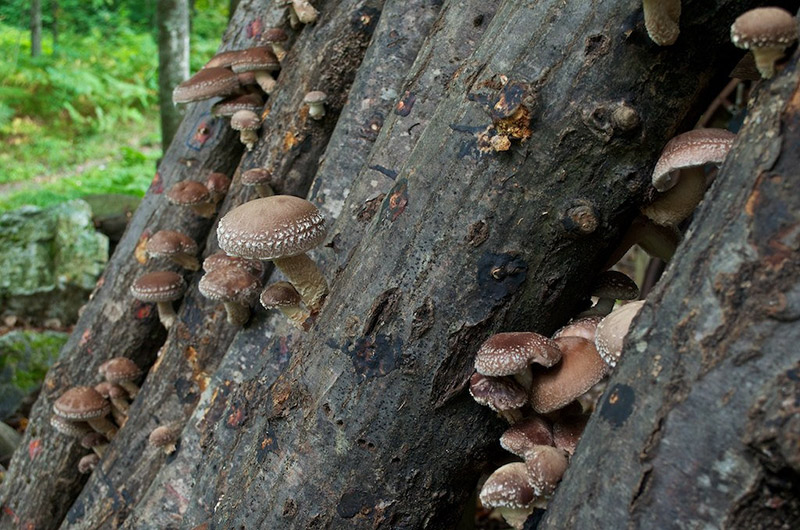
A mushroom is, of course, a fungus. More specifically, it is the fleshy, fruiting body of a fungus. All mushroom are fungi, but not all fungi are mushrooms. Mushrooms sometimes usually have stems and caps, and typically have gills. Those are the little frills you see on the underside of a mushroom's cap. Those gills produce spores that, in turn, produce more fungi. The mushroom is connected to more fungal structure embedded in its food source, whether that be the soil, a tree, or something else.
A big factor in the flavor of many mushrooms is their umami. Umami basically means "deliciousness," but was applied by scientist, Ikeda Kikunae, to mean a sort of rich, savory flavor. Ikeda was studying the science behind the flavor, and discovered that glutamate was the cause. Ikeda mainly used kombu dashi for his studies, and subsequent studies also looked at dried bonito flakes. However, in 1957, Kuninaka Akira discovered that the ribonucleotide GMP found in shiitake mushrooms also gave an umami flavor. Based on that research he later discovered that when ingredients rich in glutamate are combined with those with ribonucleotides, the resulting umami is stronger than each individual part.
Buna-shimeji (Hypsizygus tessellatus)

Buna-shimeji are fairly small mushrooms with white, long, often-curved stems and tan caps. They taste bitter when raw, but this is replaced with a nutty flavor when cooked. They have a firm, slightly crunchy texture. They are good for most recipes.
Enokitake (Flammulina velutipes)
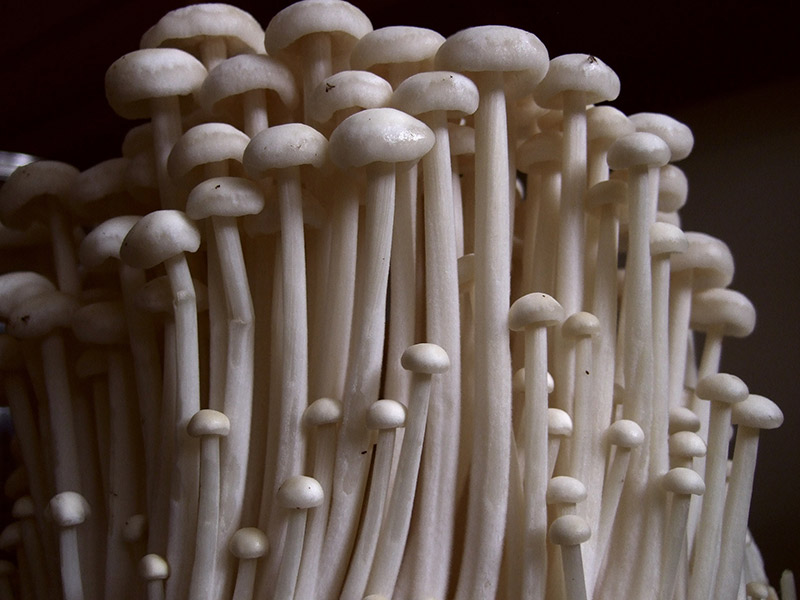
Enoki mushrooms are named after the tree on which they grow, which is known as the Chinese hackberry in English. However, they also grow on other trees, like mulberry and persimmon trees. In the supermarket, they are easily recognizable as dense clumps of small, white mushrooms with long, slender stems. Cultivated enoki are grown in a dark, carbon dioxide-rich environment to keep them white and encourage long stem growth, respectively. Wild enoki tend to be dark brown, with shorter, thicker stems.
Enoki don't have a strong flavor, so they probably aren't the best mushroom to take center stage in a dish. They do have a relative crispness to them. For these reasons, plus their small size, they are often used in soups and stews. They could also be used in some side dishes or salads.
Eringi (Pleurotus eryngii)
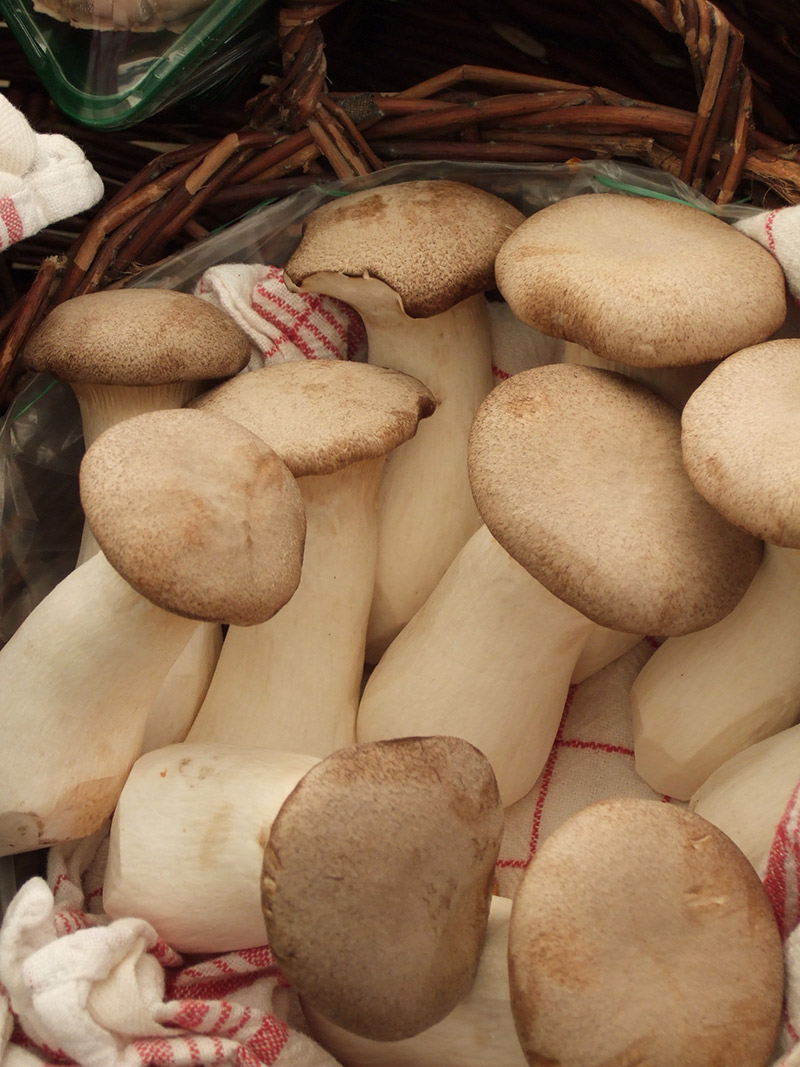
Eringi have many names in the West, perhaps most common being the King Oyster Mushroom. Unlike most of the fungi in this article, it is not native to Japan. It was mass cultivated there in the early 1990s and has become quite popular since. Eringi are rather large, with long, thick, meaty white stems, and relatively small tan caps. They don't have a lot of flavor raw, but when cooked the umami comes forward. I find them particularly good when grilled. Keep it simple and cook them over flame or in a pan with a bit of salt and pepper.
Magic Mushrooms
Some mushrooms can have psychedelic effects on those who consume them. There are a number of such mushrooms, but the most popular by far are from the genus Psilocybe. They cause hallucinations due to two different chemicals: psilocybin and psilocin.
Japan is a country that tends to take drugs quite seriously (apart from alcohol and tobacco), so it's surprising that before 2002 magic mushrooms were legal. You could buy them in head shops, and apparently even in vending machines. In 2002 they were made illegal, perhaps because of the World Cup that was played in Japan that year. It's thought that Japanese leaders changed the law in anticipation of an influx of foreign fans getting high and causing trouble.
Maitake (Grifola frondosa)

Maitake translates to "dancing mushroom." They don't look like your stereotypical mushrooms. They grow in a dense cluster and the stems flow into the frond-like caps, giving the whole cluster an appearance something like a head of cabbage. The clusters can get quite large: over 40 kilograms (100 pounds)! They have a woody, smoky flavor, but it isn't as meaty as some other mushrooms. They can be used in stir frying, simmering, roasting and other applications.
Matsutake (Tricholoma mastutake)

Matsutake form a symbiotic relationship with the roots of certain tree species, most notably the Japanese Red Pine, hence the name matsutake ("pine mushroom"). Matustake have long, thick stems and knob-like brown caps. Due to the difficulty in finding them, they are quite expensive. The average price is about $90 per kilogram, but matsutake found in Japan at the beginning of the season can go for up to $2,000 per kilogram! Matsutake grown in the U.S. can be had for a much lower price sometimes. If you get the chance to try them, one of the best ways to show off their flavor is in a simple rice bowl dish (matsutake gohan).
Nameko (Pholiota nameko)
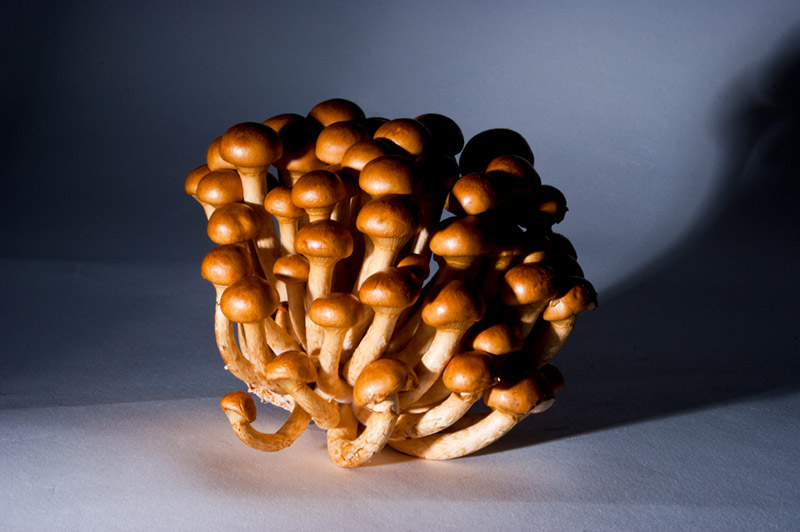
Nameko are small and amber-brown. They have a nutty flavor and a thin layer of gelatin on their caps, which forms a sort of glaze when cooking with them. They are often used in miso soup, nabemono, and stir-fries.
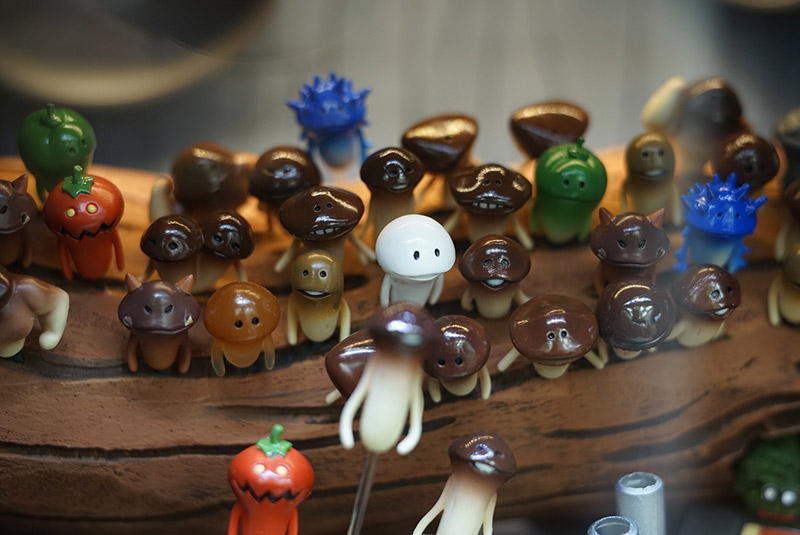
Long popular in Japanese cuisine, nameko have recently gained notoriety in another field. A trilogy of smart phone games called "Nameko Saibai Kit," has become quite popular. The goal of the game is to raise various types of anthropomorphic cartoon nameko. Of course, with popularity comes merchandise, and you can find plenty of stuff featuring these cute little mushrooms.
Shiitake (Lentinula edodes)

Shiitake are named after the tree on whose dead logs they commonly grow, the Castanopsis cuspidate. Shiitake is probably the most popular Japanese mushroom, both at home and abroad. Who knows how long people have been collecting them in Japan, but somewhere along the line they discovered a method for cultivating them. A shiitake bearing log would be placed next to freshly cut logs, allowing the fungus to spread to all of them. They even found that damaging the bark of the new logs would improve the efficiency of mushroom multiplication.
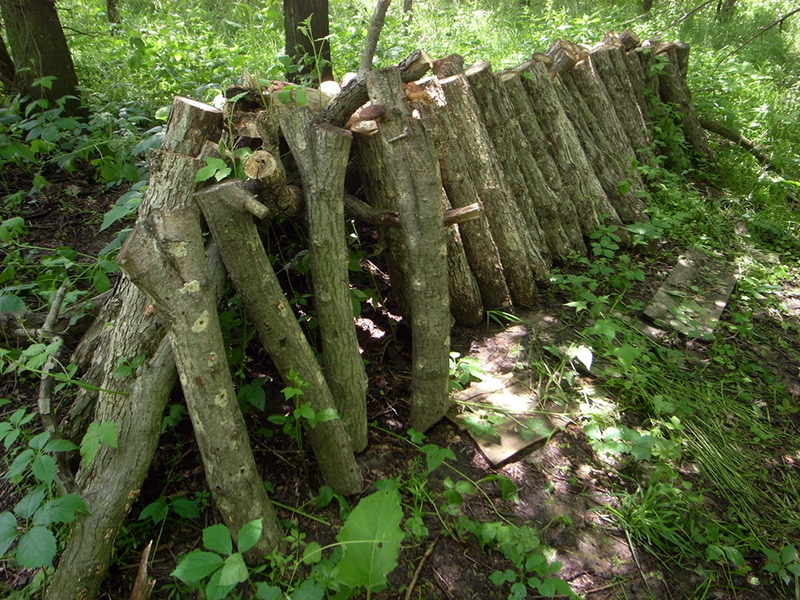
It's easy to see why shiitake are so popular, as they are both flavorsome and versatile. When cooked, they are aromatic and have a nice rich, woody flavor. Due to this and their chewy, dense texture they make a great meat substitute. Shiitake can also be bought dried, which actually intensifies their flavor and adds a bit of smokiness. The applications of shiitake are many and varied, from stir fries to grilling, from simmering to soups and nabemono (and that's just in Japanese cuisine). I love making a shiitake nimono: simmering the mushrooms in dashi and soy sauce until the liquid reduces to almost nothing. You'll have a bowl full of concentrated umami.
Kinoko no Yama
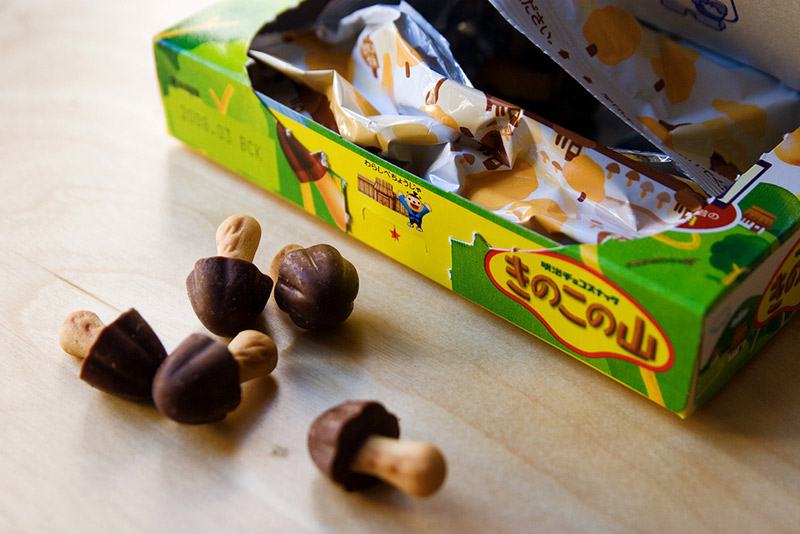
Okay, so obviously these aren't real mushrooms. However, they have been a popular snack ever since Meiji launched them in 1975. Their part milk, part dark chocolate caps sit atop crunchy biscuit stems, and make for an excellent combo. No list of Japanese mushrooms is complete without them.
Mushroom Medicine
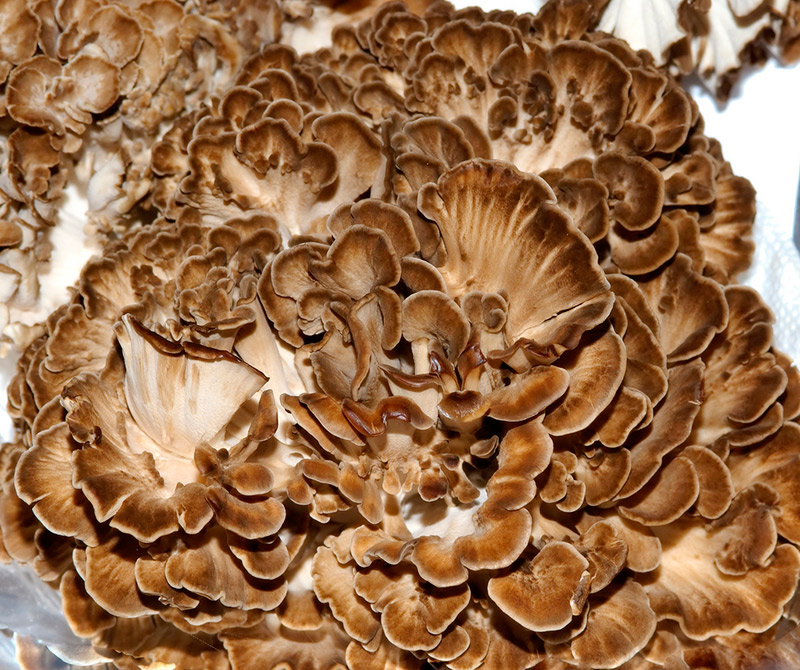
Some mushrooms have been used in traditional medicine for centuries. For example, the fungus from maitake has long been used in China and Japan for enhancing the immune system. Modern research has indicated that the entire maitake may be useful in this regard. In addition, a 2009 study by Sloan-Kettering showed it to have anti-tumor effects. It may also have hypoglycemic effects.
Shiitake mushrooms have also shown some promise in the fighting both cancer and viruses, but studies have not been conclusive. Still, as long as you're enjoying some mushroom cooking, it's nice to think they might be helping you too.
How to Choose and Store Your Mushrooms
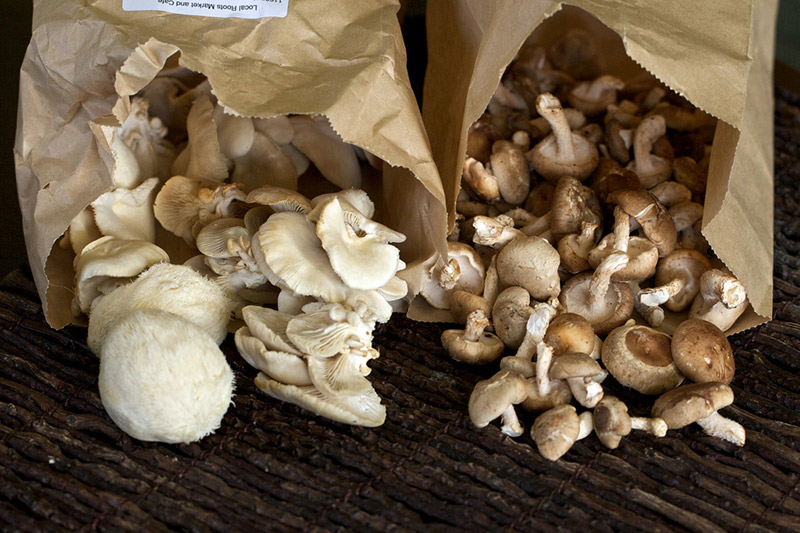
When selecting mushrooms at the store they should be dry, but not withered. If they come plastic-wrapped, look out for condensation. When storing them, sealing them in a paper bag is a good way to keep them from getting too wet or dry. If you keep them in a plastic-wrapped tub, poking a few holes in the plastic is a good idea. At any rate, you should use them within a few days.
You shouldn't wash them until you're about to use them. Some say they shouldn't be washed at all for fear of waterlogging them. Brush them instead. A brush is fine, but time consuming, so a light wash should be fine. If you don't see any dirt on them, there shouldn't be a need for either.
Let's Put a Cap On This
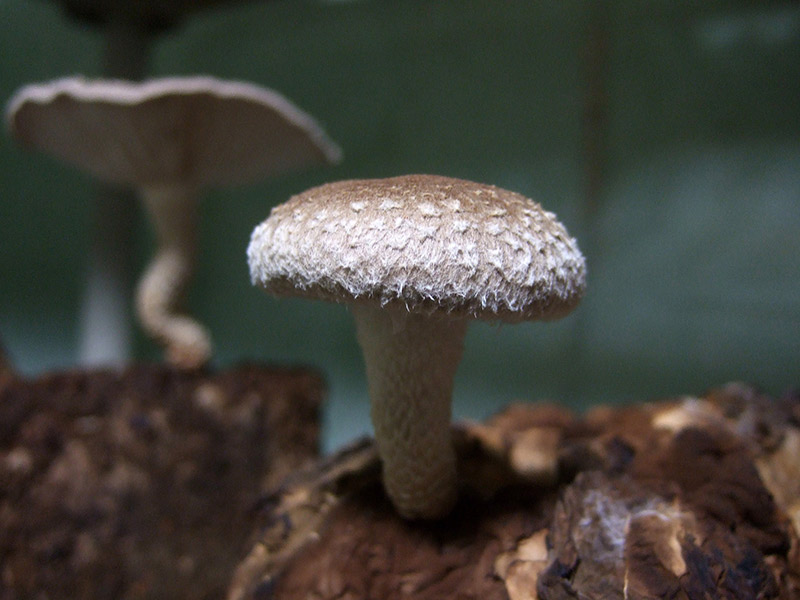
What more is there to say? Mushrooms are some tasty and versatile fungi. Go forth and try as many kinds, in as many ways as possible!
